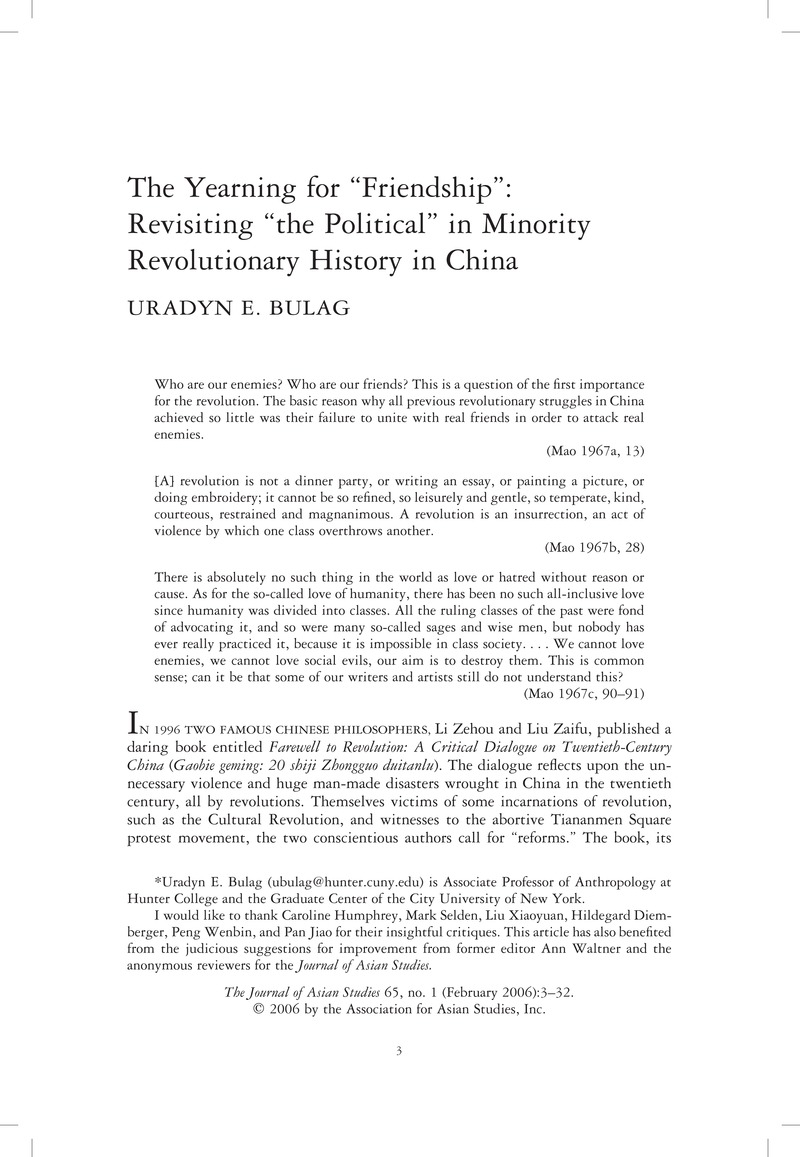Crossref Citations
This article has been cited by the following publications. This list is generated based on data provided by Crossref.
FRIEDMAN, EDWARD
2008.
Where is Chinese nationalism? The political geography of a moving project.
Nations and Nationalism,
Vol. 14,
Issue. 4,
p.
721.
Coble, Parks M.
2010.
The Legacy of China’s Wartime Reporting, 1937-1945: Can the Past Serve the Present?.
Modern China,
Vol. 36,
Issue. 4,
p.
435.
Saxer, Martin
2014.
Re-Fusing Ethnicity and Religion: An Experiment on Tibetan Grounds.
Journal of Current Chinese Affairs,
Vol. 43,
Issue. 2,
p.
181.
Setzekorn, Eric
2015.
Chinese Imperialism, Ethnic Cleansing, and Military History, 1850-1877.
Journal of Chinese Military History,
Vol. 4,
Issue. 1,
p.
80.
BRIDGES, BRIAN
2020.
‘An Ambiguous Area’: Mongolia in Soviet-Japanese relations in the mid-1930s.
Modern Asian Studies,
Vol. 54,
Issue. 3,
p.
730.
Tuo, Jianing
2021.
Between Colonialism and Despotism.
Prism,
Vol. 18,
Issue. 2,
p.
538.
Hai, Peng
2024.
Before social death: cultural rule and ethnic expression in 1980s Xinjiang.
Ethnic and Racial Studies,
Vol. 47,
Issue. 1,
p.
24.



